Assembler
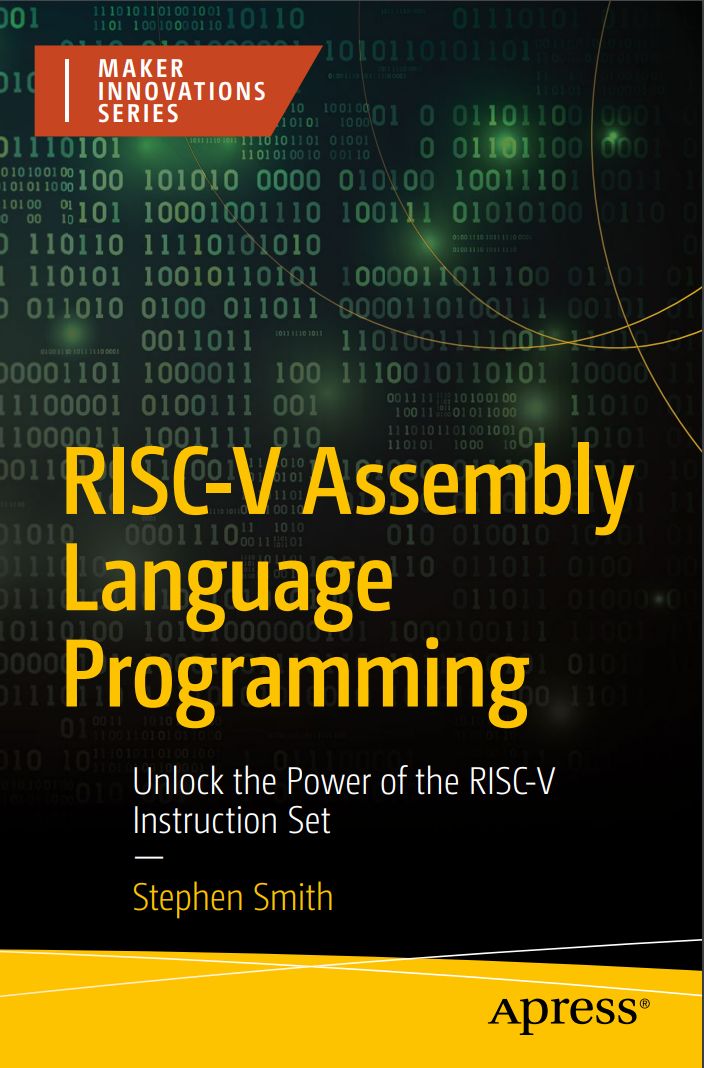
RISC-V Assembly Language Programming - Stephen Smith
Gain the skills required to dive into the fundamentals of the RISC-V instruction set architecture. This book explains the basics of code optimization, as well as how to interoperate with C and Python code, thus providing the starting points for your own projects as you develop a working knowledge of assembly language for various RISC-V processors.
The RISC-V processor is the new open-source CPU that is quickly gaining popularity and this book serves as an introduction to assembly language programming for the processor in either 32- or 64-bit mode. You’ll see how to write assembly language programs for several single board computers, including the Starfive Visionfive 2 and the Espressif ESP32-C3 32-bit RISC-V microcontroller. The book also covers running RISC-V Linux with the QEMU emulator on and Intel/AMD based PC or laptop and all the tools required to do so.
Moving on, you’ll examine the basics of the RISC-V hardware architecture, all the groups of RISC-V assembly language instructions and understand how data is stored in the computer’s memory. In addition, you’ll learn how to interface to hardware such as GPIO ports. With RISC-V Assembly Language Programming you’ll develop enough background to use the official RISC-V reference documentation for your own projects.
What You'll Learn
- Program basic RISC-V Assembly Language
- See how data is represented and stored in a RISC-V based computer
- Make operating system calls from Assembly Language and include other software libraries in projects
- Interface to various hardware devices
- Comprehend code containing Assembly Language
- Reverse engineer and hack code
- Use the official RISC-V reference documentation
Who This Book Is For
Those who have already learned to program in a higher-level language like Python, Java, C# or even C and now wish to learn Assembly Language programming.
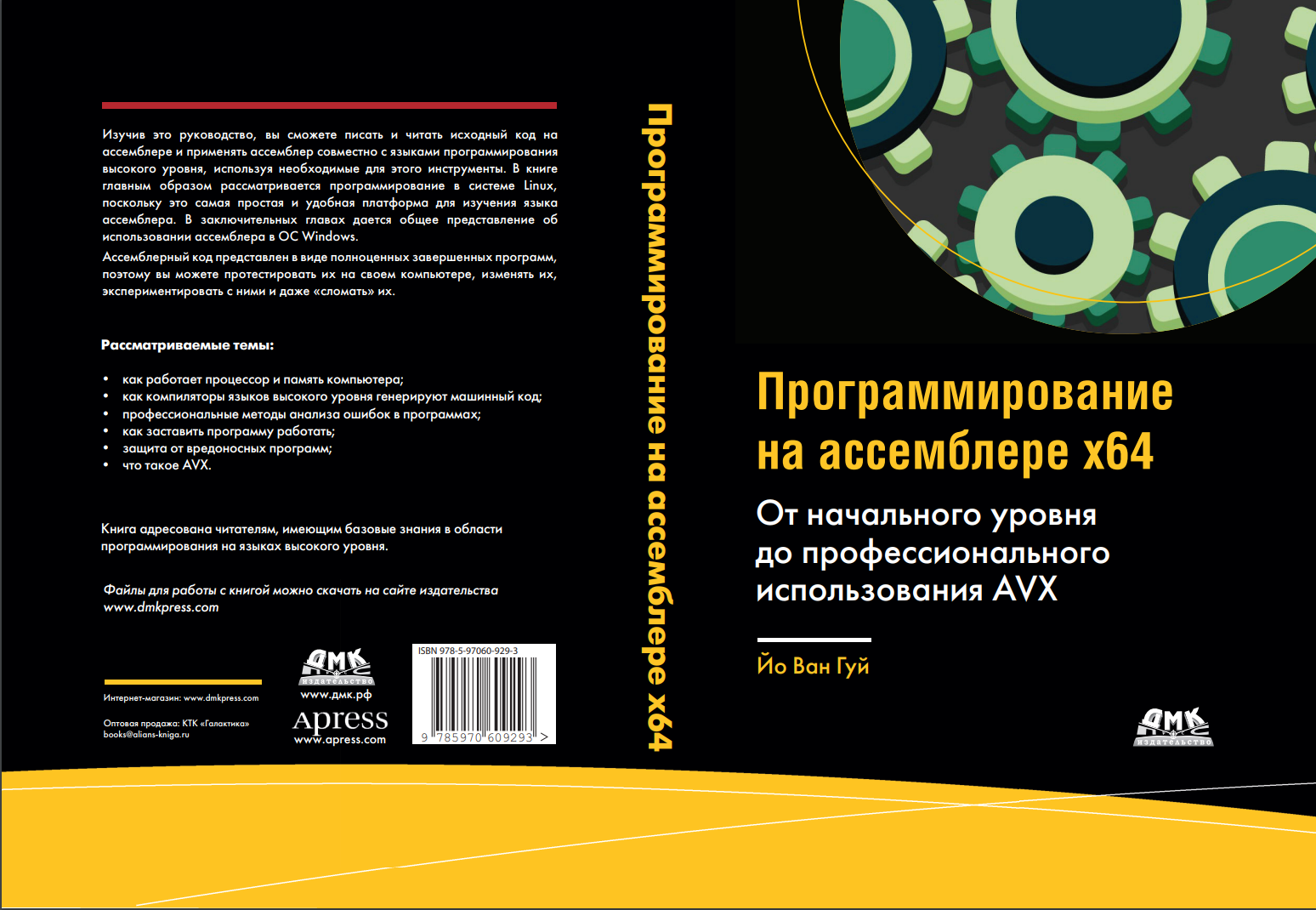
Программирование на ассемблере x64 - Йо Ван Гуй
Изучив это руководство, вы сможете писать и читать исходный код на ассемблере и применять ассемблер совместно с языками программирования высокого уровня, используя необходимые для этого инструменты. В книге главным образом рассматривается программирование в системе Linux, поскольку это самая простая и удобная платформа для изучения языка ассемблера. В заключительных главах дается общее представление об использовании ассемблера в ОС Windows. Ассемблерный код представлен в виде полноценных завершенных программ, поэтому вы можете протестировать их на своем компьютере, изменять их, экспериментировать с ними и даже «сломать» их.
Книга адресована читателям, имеющим базовые знания в области программирования на языках высокого уровня.
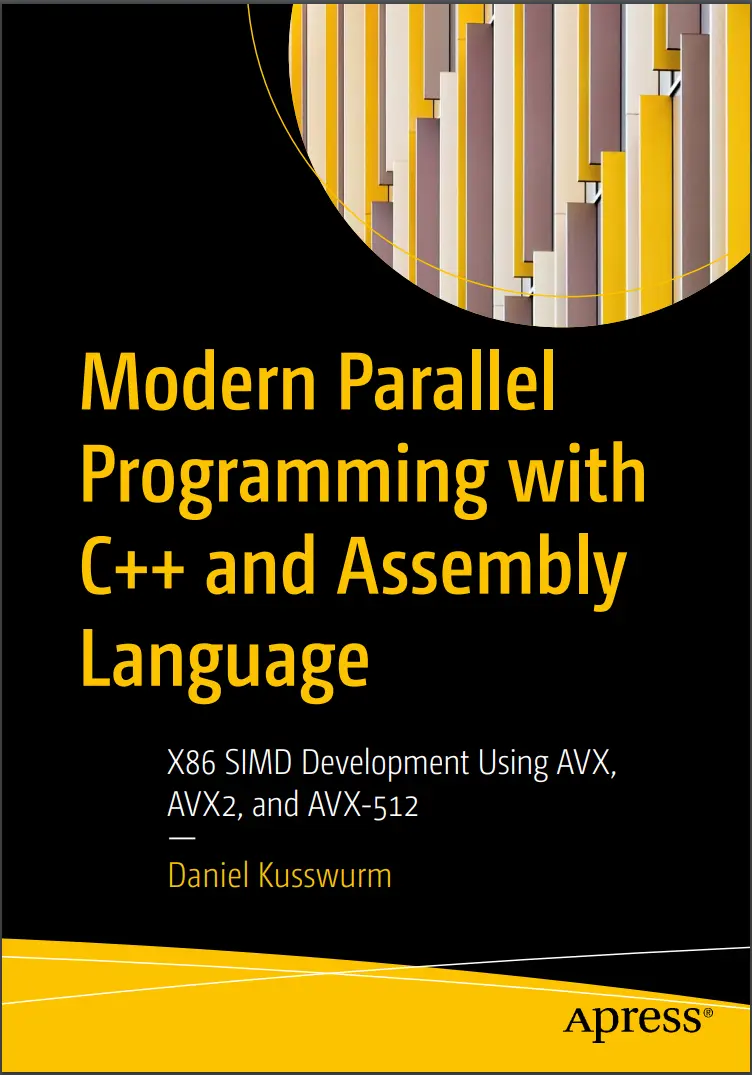
Modern Parallel Programming with C++ and Assembly Language - Daniel Kusswurm
Learn the fundamentals of x86 Single instruction multiple data (SIMD) programming using C++ intrinsic functions and x86-64 assembly language. This book emphasizes x86 SIMD programming topics and technologies that are relevant to modern software development in applications which can exploit data level parallelism, important for the processing of big data, large batches of data and related important in data science and much more.
Modern Parallel Programming with C++ and Assembly Language is an instructional text that explains x86 SIMD programming using both C++ and assembly language. The book’s content and organization are designed to help you quickly understand and exploit the SIMD capabilities of x86 processors. It also contains an abundance of source code that is structured to accelerate learning and comprehension of essential SIMD programming concepts and algorithms.
After reading this book, you will be able to code performance-optimized AVX, AVX2, and AVX-512 algorithms using either C++ intrinsic functions or x86-64 assembly language.
What You Will Learn
- Understand the essential details about x86 SIMD architectures and instruction sets including AVX, AVX2, and AVX-512.
- Master x86 SIMD data types, arithmetic instructions, and data management operations using both integer and floating-point operands.
- Code performance-enhancing functions and algorithms that fully exploit the SIMD capabilities of a modern x86 processor.
- Employ C++ intrinsic functions and x86-64 assembly language code to carry out arithmetic calculations using common programming constructs including arrays, matrices, and user-defined data structures.
- Harness the x86 SIMD instruction sets to significantly accelerate the performance of computationally intense algorithms in applications such as machine learning, image processing, computer graphics, statistics, and matrix arithmetic.
- Apply leading-edge coding strategies and techniques to optimally exploit the x86 SIMD instruction sets for maximum possible performance.
Who This Book Is For
Intermediate to advanced programmers/developers in general. Readers of this book should have previous programming experience with modern C++ (i.e., ANSI C++11 or later) and Assembly. Some familiarity with Microsoft’s Visual Studio or the GNU toolchain will be helpful. The target audience for Modern X86 SIMD Programming are experienced software developers, programmers and maybe some hobbyists.
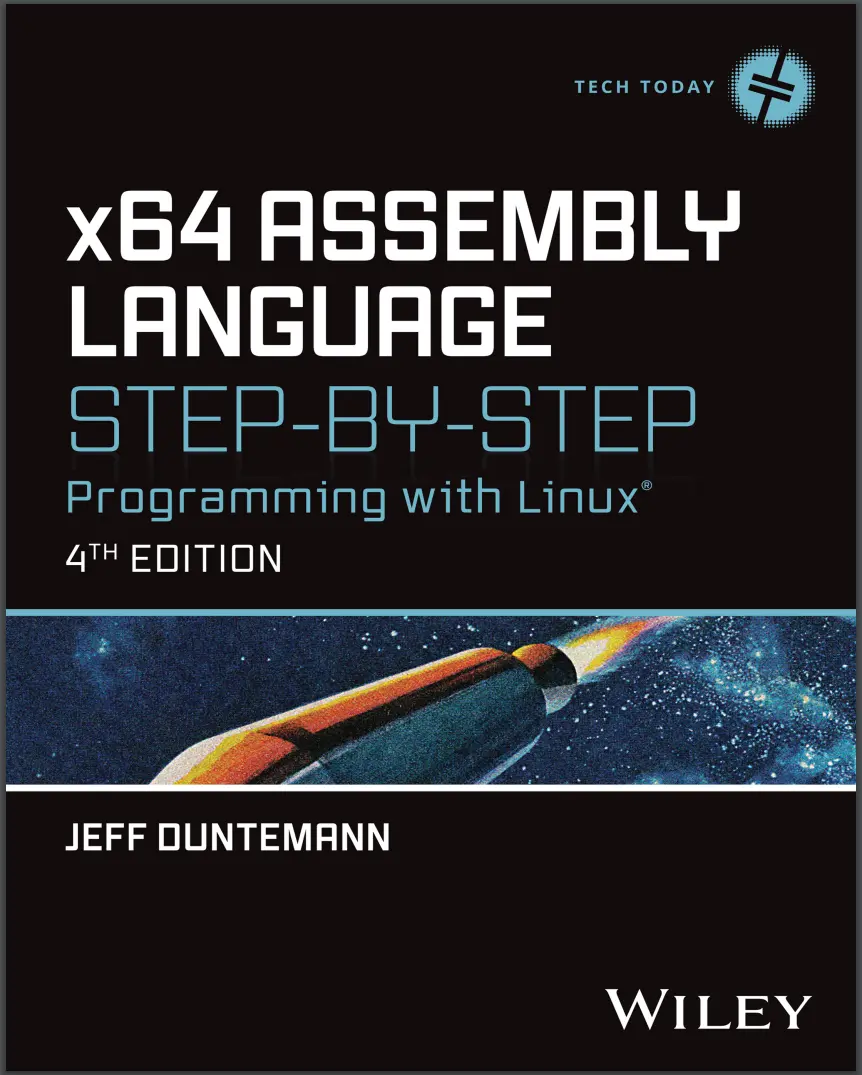
x64 Assembly Language Step-by-Step. 4 Ed - Jeff Duntemann
The long-awaited x64 edition of the bestselling introduction to Intel assembly language
In the newly revised fourth edition of x64 Assembly Language Step-by-Step: Programming with Linux, author Jeff Duntemann delivers an extensively rewritten introduction to assembly language with a strong focus on 64-bit long-mode Linux assembler. The book offers a lighthearted, robust, and accessible approach to a challenging technical discipline, giving you a step-by-step path to learning assembly code that’s engaging and easy to read.
x64 Assembly Language Step-by-Step makes quick work of programmable computing basics, the concepts of binary and hexadecimal number systems, the Intel x86/x64 computer architecture, and the process of Linux software development to dive deep into the x64 instruction set, memory addressing, procedures, macros, and interface to the C-language code libraries on which Linux is built.
You’ll also find:
- A set of free and open-source development and debugging tools you can download and put to use immediately
- Numerous examples woven throughout the book to illustrate the practical implementation of the ideas discussed within
- Practical tips on software design, coding, testing, and debugging
A one-stop resource for aspiring and practicing Intel assembly programmers, the latest edition of this celebrated text provides readers with an authoritative tutorial approach to x64 technology that’s ideal for self-paced instruction.

Разработка с использованием квантовых компьютеров - Владимир Силва
Квантовые вычисления не просто меняют реальность! Совершенно новая отрасль рождается на наших глазах, чтобы создать немыслимое ранее и обесценить некоторые достижения прошлого.
В этой книге рассмотрены наиболее важные компоненты квантового компьютера: кубиты, логические вентили и квантовые схемы, а также объясняется отличие квантовой архитектуры от традиционной. Вы сможете бесплатно экспериментировать с ними как в симуляторе, так и на реальном квантовом устройстве с применением IBM Q Experience.
Вы узнаете, как выполняются квантовые вычисления с помощью QISKit (программный инструментарий для обработки квантовой информации), Python SDK и других API, в частности QASM.
Наконец, вы изучите современные квантовые алгоритмы, реализующие запутанность, генерацию случайных чисел, линейный поиск, факторизацию целых чисел и др. Разберетесь с состояниями Белла, описывающими запутанность, алгоритмом Гровера для линейного поиска, алгоритмом Шора для факторизации целых чисел, алгоритмами оптимизации и многим другим.
Вы научитесь:
- Удаленно запускать программы, пользуясь Q Experience REST API.
- Писать алгоритмы, обеспечивающие высочайшую производительность по сравнению с аналогами для традиционных компьютеров.
- Создавать REST-клиент на Node.js для аутентификации, прослушивания удаленных устройств, запроса информации о квантовых процессорах, удаленного контроля и запуска экспериментов в облаке.
- Использовать квантовую телепортацию. Воспользовавшись классическими вычислениями и квантовой запутанностью между отправителем и получателем, передавать точное состояние кубита (квантовой информации).
- Программировать и играть в квантовый вариант "Морского боя".
- Использовать Q Experience Composer для создания визуальных программ/экспериментов.
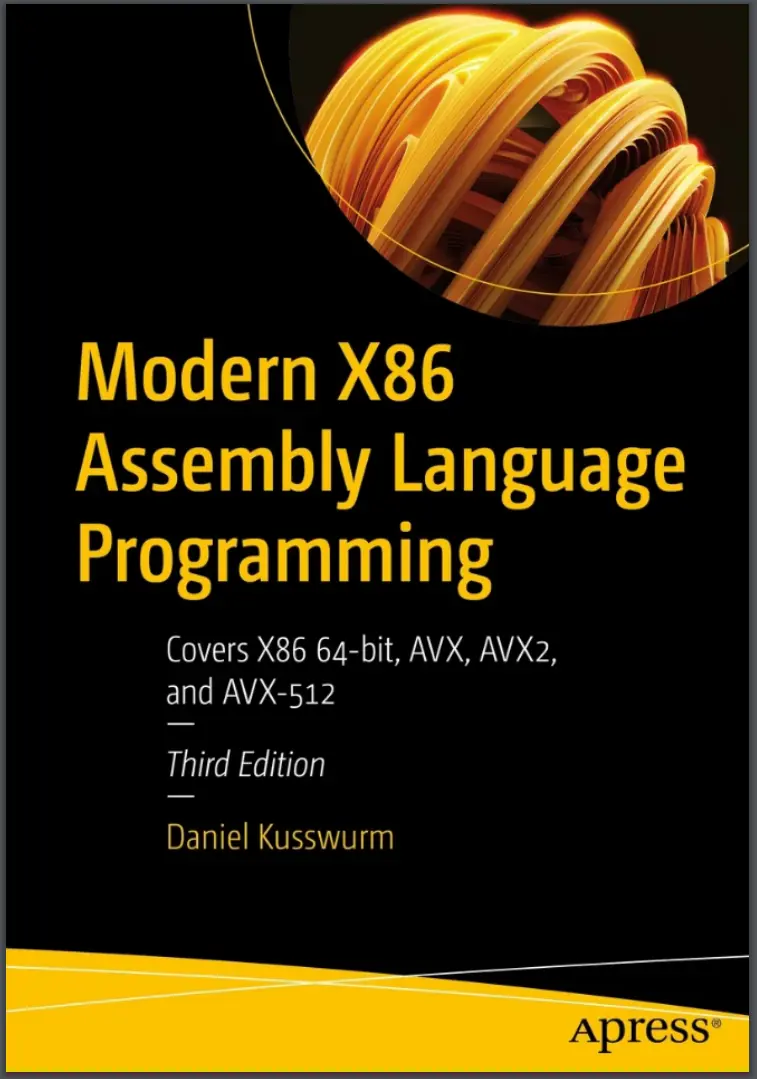
Modern X86 Assembly Language Programming. 3 Ed - Daniel Kusswurm
This book is an instructional text that will teach you how to code x86-64 assembly language functions. It also explains how you can exploit the SIMD capabilities of an x86-64 processor using x86-64 assembly language and the AVX, AVX2, and AVX-512 instruction sets.
This updated edition’s content and organization are designed to help you quickly understand x86-64 assembly language programming and the unique computational capabilities of x86 processors. The source code is structured to accelerate learning and comprehension of essential x86-64 assembly language programming constructs and data structures. Modern X86 Assembly Language Programming, Third Edition includes source code for both Windows and Linux. The source code elucidates current x86-64 assembly language programming practices, run-time calling conventions, and the latest generation of software development tools.
What You Will Learn
- Understand important details of the x86-64 processor platform, including its core architecture, data types, registers, memory addressing modes, and the basic instruction set
- Use the x86-64 instruction set to create assembly language functions that are callable from C++
- Create assembly language code for both Windows and Linux using modern software development tools including MASM (Windows) and NASM (Linux)
- Employ x86-64 assembly language to efficiently manipulate common data types and programming constructs including integers, text strings, arrays, matrices, and user-defined structures
- Explore indispensable elements of x86 SIMD architectures, register sets, and data types.
- Master x86 SIMD arithmetic and data operations using both integer and floating-point operands
- Harness the AVX, AVX2, and AVX-512 instruction sets to accelerate the performance of computationally-intense calculations in machine learning, image processing, signal processing, computer graphics, statistics, and matrix arithmetic applications
- Apply leading-edge coding strategies to optimally exploit the AVX, AVX2, and AVX-512 instruction sets for maximum possible performance
Who This Book Is For
Software developers who are creating programs for x86 platforms and want to learn how to code performance-enhanced algorithms using the core x86-64 instruction set; developers who need to learn how to write SIMD functions or accelerate the performance of existing code using the AVX, AVX2, and AVX-512 instruction sets; and computer science/engineering students or hobbyists who want to learn or better understand x86-64 assembly language programming and the AVX, AVX2, and AVX-512 instruction sets.
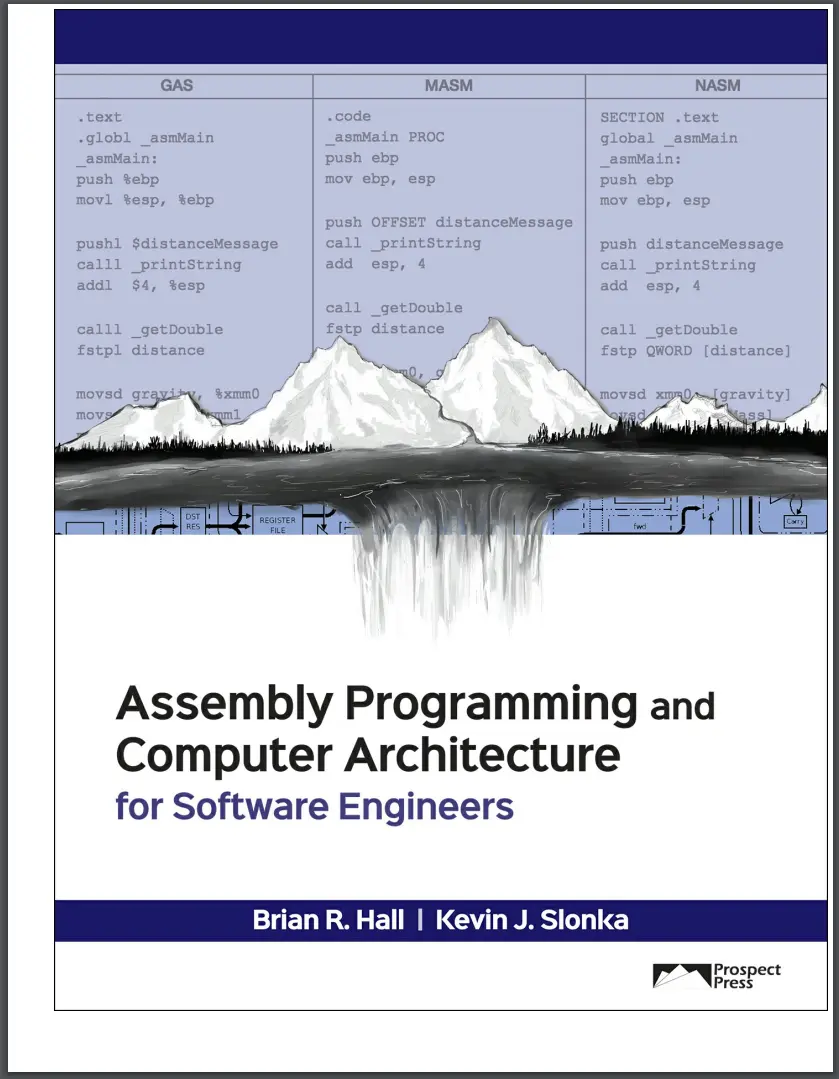
Assembly Programming and Computer Architecture for Software Engineers - Brian R. Hall, Kevin J. Slonka
Assembly Programming and Computer Architecture for Software Engineers is an educational examination of Assembly programming and computer architecture. We approach these topics from a practical point of view, addressing why and how questions throughout the text. We begin by laying the foundation of computer language and computer architecture, and then we delve into Assembly programming as a mechanism for gaining a better understanding of computer architecture, and how Assembly can be used for software development.
Most of the existing books on computer architecture have one or more of the following disadvantages: (1) based on a non-mainstream architecture; (2) written for computer and electrical engineers as opposed to computer scientists and software engineers; (3) focused on a single platformspecific development environment; (4) over-priced; and (5) lacking in practical content. We wanted to give our students something better
/assembly_language_for_x86_pr_gIf7bNm.jpg)
Assembly Language for x86 Processors. 8th Ed - Kip R. Irvine
Assembly Language for x86 Processors, 8th Edition, teaches assembly language programming and architecture for x86 and Intel64 processors. It is an appropriate text for the following types of college courses:
- Assembly Language Programming
- Fundamentals of Computer Systems
- Fundamentals of Computer Architecture
Students use Intel or AMD processors and program with Microsoft Macro Assembler (MASM), running on recent versions of Microsoft Windows. Although this book was originally designed as a programming textbook for college students, it serves as an effective supplement to computer architecture courses.
As a testament to its popularity, previous editions have been translated into numerous languages.
/professionalnoe_program_tajC28P.jpg)
Профессиональное программирование на ассемблере - Даниэль Куссвюрм
В книге рассматривается программирование для 64-разрядной архитектуры x86 и использование расширенного набора векторных команд (AVX). Изучив этот материал, вы сможете кодировать быстродействующие функции и алгоритмы с использованием 64-разрядного языка ассемблера x86 и расширений набора команд AVX, AVX2 и AVX-512.
Примеры исходного кода разработаны с использованием Visual Studio C++ и MASM; для их запуска рекомендуется ПК на базе x86 с 64-разрядной ОС Windows 10 и процессором, поддерживающим AVX.
Предполагается, что читатели имеют опыт программирования на языках высокого уровня и базовые знания C++.
Книга предназначена разработчикам, которые хотят научиться писать код с использованием языка ассемблера x64.
/modern_x86_assembly_la_ilX29Wp.jpg)
Modern X86 Assembly Language Programming. 2nd Ed - Daniel Kusswurm
Modern X86 Assembly Language Programming, Second Edition is an edifying text about x86 64-bit (x86-64) assembly language programming. The book’s content and organization are designed to help you quickly understand x86-64 assembly language programming and the computational resources of Advanced Vector Extensions (AVX). It also contains an abundance of source code that is structured to accelerate learning and comprehension of essential x86-64 assembly language constructs and SIMD programming concepts. After reading and using this book, you’ll be able to code performance-enhancing functions and algorithms using x86-64 assembly language and the AVX, AVX2, and AVX-512 instruction sets.
Before proceeding I should explicitly mention that this book does not cover x86-32 assembly language programming. It also doesn’t discuss legacy x86 technologies such as the x87 floating-point unit, MMX, and Streaming SIMD Extensions. The first edition remains relevant if you’re interested in learning about these topics. This book does not explain x86 architectural features or privileged instructions that are used in operating systems. However, you will need to thoroughly understand the material that’s presented in this book to develop x86 assembly language code for use in an operating system.
While it is still theoretically possible to write an entire application program using assembly language, the demanding requirements of contemporary software development make such an approach impractical and ill advised. Instead, this book concentrates on coding x86-64 assembly language functions that are callable from C++. Each source code example was created using Microsoft Visual Studio C++ and Microsoft Macro Assembler (MASM).
/assembly_language_for_x86_proc_wXgjFZA.jpg)
Assembly Language for x86 Processors. 7 Ed - Kip R. Irvine
Assembly Language for x86 Processors, 7e is suitable for undergraduate courses in assembly language programming and introductory courses in computer systems and computer architecture. Proficiency in one other programming language, preferably Java, C, or C++, is recommended.
Written specifically for 32- and 64-bit Intel/Windows platform, this complete and fully updated study of assembly language teaches students to write and debug programs at the machine level. This text simplifies and demystifies concepts that students need to grasp before they can go on to more advanced computer architecture and operating systems courses. Students put theory into practice through writing software at the machine level, creating a memorable experience that gives them the confidence to work in any OS/machine-oriented environment.